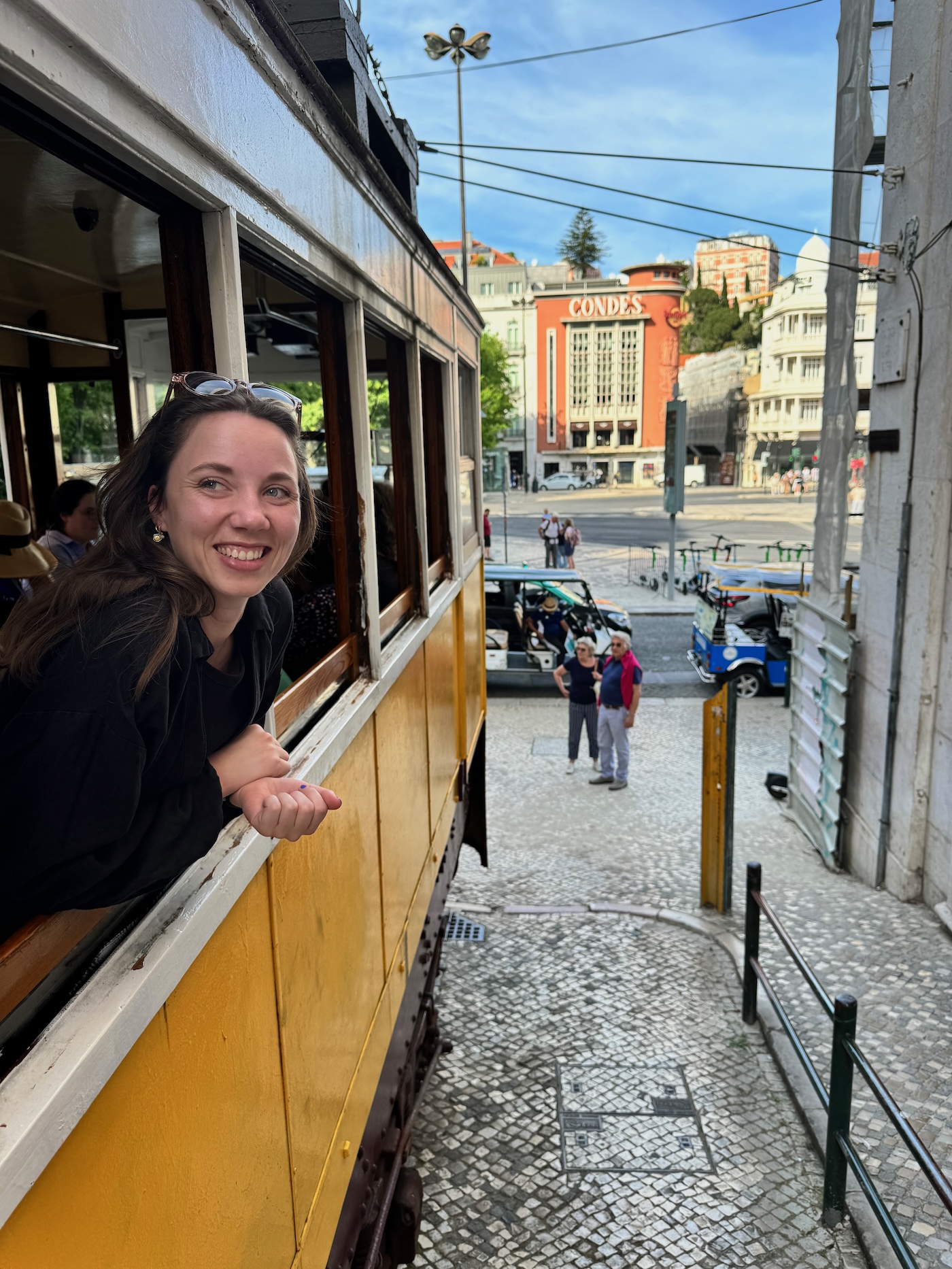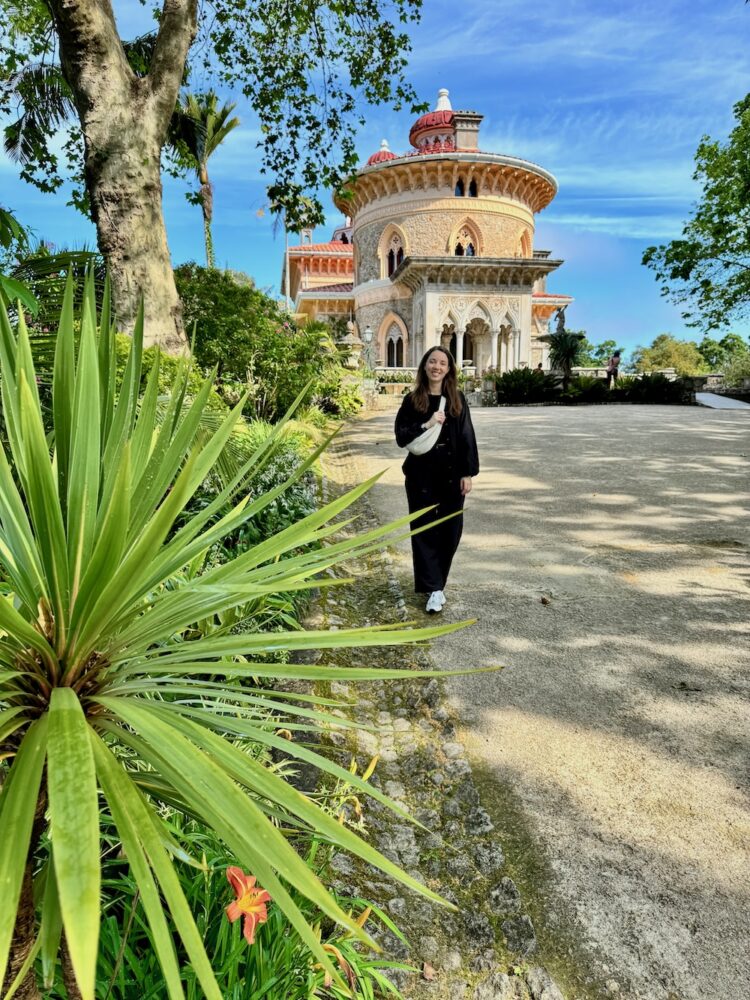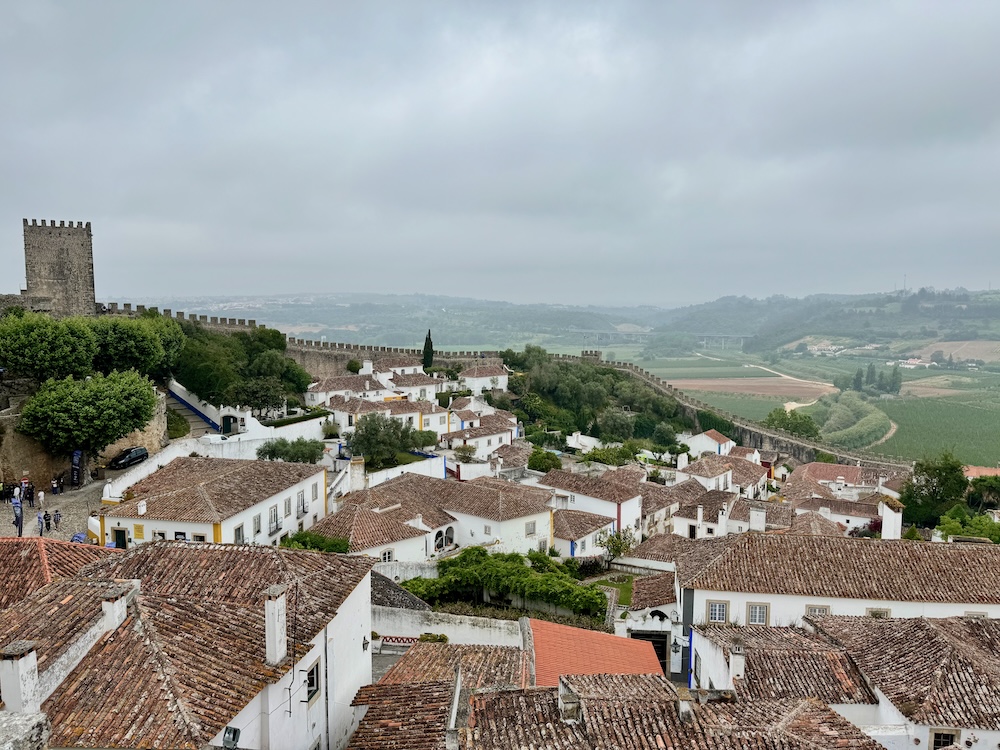
Did you know you can travel very well by train through Portugal? In the spring, I made such a wonderful train trip through Portugal. From the vibrant Lisbon, we traveled via Sintra, Óbidos, and Coimbra to the picturesque Porto. Yes, it was a whole round trip, but not by car—just by train. And the best part? You can fly into Lisbon and fly back to the Netherlands from Porto! If you’re looking for a sustainable and relaxed way to discover Portugal, taking the train is definitely recommended. No hassle with parking in busy cities, less emissions, and along the way, you enjoy beautiful landscapes. Oh, and it’s affordable too! Read below for all the details about this special train vacation.
Traveling by Train Through Portugal
→ Handy for this trip: Vliegtickets naar Lissabon & vlieg terug vanaf Porto
→ Recommendation: Stel je reis door Portugal samen met Riksja




Train Route Through Portugal
Portugal is and remains a beautiful country. You will find beautiful cities with impressive architecture and delicious restaurants, as well as incredible beaches and beautiful nature. Thanks to the excellent train connections, Portugal is perfect for a train trip. We followed this route through Portugal: Lisbon – Sintra – Óbidos – Coimbra – Porto.
→ Tip: De treinreis stelden we samen met behulp van Riksja Travel
Starting Point of Our Train Journey: Vibrant Lisbon
Our journey began in Lisbon, the city of the seven hills and the capital of Portugal. A city that effortlessly combines historical charm and modern vibes. Thanks to Riksja Travel, we stayed in a nice boutique hotel near Praça dos Restauradores, with a rooftop pool. Ideal for relaxing after a day full of discoveries.
We kicked off with a visit to Castelo de São Jorge, located on the highest hill in the city. The view there? Absolutely the best in Lisbon. Then we jumped on the famous bright yellow tram, the Elevador da Glória, which took us to the Bairro Alto district. This former working-class neighborhood has a raw charm and is filled with small bars, hidden restaurants, and colorful facades covered with graffiti. From the Miradouro de São Pedro de Alcântara, we enjoyed another beautiful view of the city, and of course, we couldn’t miss the Instagram-worthy Pink Street!
Later in the afternoon, we took the ferry to Almada, across the Tagus River. There, we settled in the Jardim de Rio with a cocktail in hand to watch the sun set behind the iconic Ponte 25 de Abril. Tip: You will also find the popular restaurant Ponte Final here, but be sure to make a reservation well in advance.
Another highlight in Lisbon was the Polaroid tour. Together with our guide and vintage Polaroid cameras, we strolled through the narrow streets of Alfama, the oldest and most atmospheric neighborhood in the city. Alfama is a place where you feel the soul of Lisbon. Think of colorful azulejos on every corner, winding alleys full of laundry lines, small taverns where the smell of grilled sardines greets you, and the melancholic sounds of fado everywhere. During the tour, we learned not only about the rich history of the country and this neighborhood, but also how to take the perfect Polaroid photo. A fun way to capture memories and immediately have a unique souvenir to take home!
→ Read also: 14 x Lisbon attractions that you don’t want to miss!
→ Hotel tip for Lisbon: Lisbon Check-In Guesthouse or Casa do Patio by Shiadu

Our next stop was Sintra. From Rossio Station in Lisbon, which itself is already a bit of history, we took the train to Sintra. The ride was direct and took about 40 minutes. Sintra is especially famous for its impressive palaces and castles, and of course, we couldn’t wait to explore these.
One of the most famous is the Palácio Nacional de Pena, a colorful palace you simply cannot miss. It is always crowded, so my tip is to go as early as possible to avoid the crowds. The colorful mix of architecture of this palace is truly unique.
My personal favorite is the hidden gem, Palácio de Monserrate. This palace is a mix of various architectural styles, from Gothic and Moorish influences to Indian and Arabic elements. The building itself is beautiful, but what really makes it special is the lovely gardens surrounding it. These gardens are divided into different zones, ranging from lush tropical plants to serene Japanese gardens.
Lastly, we visited the Castelo dos Mouros, a medieval castle towering high above the city. This castle not only has a fascinating history but also offers a stunning view over Sintra and the surrounding landscape. It’s a bit of a climb but definitely worth it!
→ Read also: Sintra: you don’t want to miss this in Portugal
→ Cool accommodations: Chalet Saudade or Chalet Relogio Guesthouse

Óbidos is a medieval village famous for its intact city walls, narrow cobblestone streets, white houses, and historical architecture. The city wall is 1.6 kilometers long and you can walk along the entire wall. The view from here is spectacular: you overlook the picturesque village and the surrounding hilly landscape. Absolutely a must-visit!
Also below, in the cozy streets of Óbidos, there is plenty to discover. Wander through the narrow alleys and admire the whitewashed houses with traditional blue or yellow stripes, which not only provide a nice view but also have a deeper meaning. The blue accents were used to bless the houses and keep evil away. The yellow was symbolized with wealth and divine power and was often used to mark the houses of influential or wealthy families. Be sure to visit the historical churches and chapels the village is rich in, such as the Porta da Vila and Igreja de Santa Maria. Finish the afternoon with a drink of ginjinha, a sweet cherry liqueur served in an edible chocolate cup.
As Vila Literária (City of Literature), Óbidos is a paradise for book lovers, with unique bookstores in unexpected places, such as an old wine shop and a former church. One of the most striking is Livraria Santiago, located in a former church on the edge of the village. We stayed in a unique hotel called The Literary Man, which was also filled with books.

After visiting Óbidos, we boarded the train again, this time heading to Coimbra. The train took us in about two hours from the charming village to this large city. Along the way, we were treated to a landscape filled with green hills and open fields, making the journey definitely worthwhile.
Coimbra is often seen as the cultural and intellectual capital of Portugal, and that is not without reason. The city is known primarily for the prestigious University of Coimbra, one of the oldest universities in Europe, founded in 1290. Of course, we couldn’t miss this iconic university and the beautiful Joanina library. What makes the atmosphere of the city even more special are the many students often walking through the city in traditional black robes, immediately giving you the feeling of experiencing a bit of old Coimbra.
Coimbra is also the birthplace of a unique form of Fado music. This melancholic music style, characterized by poetic lyrics, is often performed by male students and is an important part of the cultural identity of the city. We were fortunate that Riksja Travel arranged a dinner with live Fado music for us. It was a unique experience, and even if you don’t speak Portuguese, the emotions of the music resonate with you. Fortunately, a brief English explanation of the songs was provided beforehand, making it even more special.
Along the banks of the Mondego River, you’ll find cozy cafés, restaurants, and terraces. It’s a lovely place to relax and enjoy the view. In the surrounding parks, you see locals picnicking, walking, biking, or just sitting on a bench enjoying the view. If you’re in Coimbra, don’t miss a walk and a drink along the river.

Porto, the city from which Portugal gets its name, is the perfect final stop for our train trip through this delightful country. Just before we reached Porto station, the train crossed the Douro River via one of the many iconic bridges. What a typical way to enter this city! Porto is bursting with charm, with colorful houses in the historic Ribeira district, winding alleys, and beautiful views over the Douro River. Visit the iconic São Bento station with its impressive azulejo tiles, walk over the imposing Dom Luís I bridge, and of course, taste the famous port wine in one of the many port houses across the river. But Porto has even more to offer; from hidden gems to local delicacies, discover my 15 favorite attractions and things to do in Porto. It’s a city that stimulates your senses and continually invites you to explore further.
→ Read also: Discover Porto: these are the 15 must-see attractions in the city
→ Hotel tip: D&S – Porto São Bento Apartments or Almada Wine House

Traveling through Portugal by train is truly a recommendation. The journeys are super relaxed, and you get to visit the most beautiful places. Contact Riksja to plan your own trip through Portugal or book your train journey that takes you to cities and vineyards!



Leave a Reply